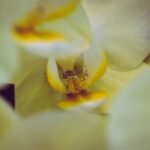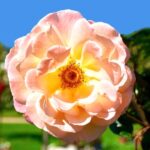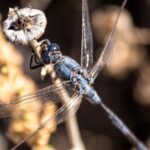Are you looking for ideas for perennial flower gardens that will bring enduring beauty to your outdoor space? Perennial flower gardens are a great way to add color and texture to your landscape year after year.
Whether you’re a seasoned gardener or just starting out, there are endless possibilities when it comes to creating a stunning perennial flower garden. In this article, we’ll explore the benefits of growing a perennial flower garden, how to choose the right location, must-have perennial flowers, design tips, maintenance advice, companion planting strategies, attracting pollinators, and creative landscaping ideas using perennials.
When it comes to cultivating a beautiful and sustainable garden that requires less maintenance and resources than annual gardens, perennial flowers are the perfect choice. They come back year after year, bringing joy with their colorful blooms and fulfilling the needs of gardeners who seek low-maintenance options. In addition to their longevity, perennial flower gardens offer other benefits that we’ll explore in this article.
Whether you have a small backyard or acres of land, finding the right location for your perennial flower garden is key to its success. The layout of your garden can greatly influence plant growth and performance. And with the right selection of plants and thoughtful design choices, you can create an eye-catching display that will thrive for years to come. Read on for expert tips on choosing the perfect spot for your perennial flower garden.
Benefits of Growing a Perennial Flower Garden
Perennial flower gardens offer a wide range of benefits that make them an appealing option for both novice and experienced gardeners. In this section, we will explore the numerous advantages of growing a perennial flower garden and how it can enhance your outdoor space.
Low Maintenance
One of the key benefits of perennial flower gardens is that they require minimal maintenance compared to annual flowers. Once established, many perennials are able to thrive without frequent replanting, saving you time and effort in the long run. They also tend to be more resistant to pests and diseases, reducing the need for chemical treatments.
Cost-Effective
While the initial investment in perennial plants may be higher than annuals, the long-term cost savings are significant. With proper care, perennials can return year after year, eliminating the need to purchase new plants seasonally. This makes them a cost-effective choice for homeowners looking to beautify their gardens without breaking the bank.
Environmental Benefits
Perennial flower gardens offer environmental benefits as well. These plants help improve soil health by preventing erosion and promoting biodiversity. Additionally, their deep root systems can help with water retention and limit runoff, making them an eco-friendly choice for landscaping. By choosing native perennial flowers, you can also support local wildlife by providing habitat and food sources for pollinators and other beneficial insects.
Choosing the Right Location for Your Perennial Flower Garden
When it comes to creating a stunning perennial flower garden, choosing the right location is essential for the success of your plants. Here are some tips to ensure that you select the perfect spot for your perennial flower garden:
- Consider the Sunlight: Most perennial flowers thrive in full sunlight, so it’s crucial to choose a location that receives at least 6-8 hours of direct sunlight per day. However, if you have some shade-loving perennials in mind, make sure to find a spot with filtered or partial shade.
- Soil Quality: The soil in your chosen location should be fertile, well-draining, and rich in organic matter. Conduct a soil test to determine its pH levels and nutrient content and amend it as necessary to create an ideal growing environment for your perennial flowers.
- Accessibility: Selecting a location that is easily accessible for watering, weeding, and general maintenance is key. You’ll want to enjoy spending time in your perennial garden without having to trek through difficult terrain.
In addition to these factors, it’s important to consider the overall aesthetic of your garden and how it will complement the rest of your landscaping. Ultimately, choosing the right location for your perennial flower garden will set the stage for a beautiful and thriving outdoor space.
For more ideas on selecting the perfect location for your perennial flower garden, consider consulting with local gardening experts or visiting botanical gardens in your area. They can provide valuable insight into what works best for different types of perennials and offer inspiration for creating an enchanting landscape filled with enduring beauty.
Whether you’re envisioning a cottage-style garden or a modern urban oasis, finding the right location is the first step towards bringing your ideas for perennial flower gardens to life.
Must-Have Perennial Flowers for Your Garden
When planning a perennial flower garden, it’s essential to choose the right flowers that will provide lasting beauty and continuous blooms year after year. Here are some must-have perennial flowers to consider for your garden:
- Roses: Known for their stunning beauty and enchanting fragrance, roses are a classic choice for any perennial flower garden. With proper care and maintenance, they can bloom throughout the growing season.
- Lavender: This aromatic herb not only adds a lovely fragrance to your garden but also attracts pollinators such as bees and butterflies. Its delicate purple blooms are a beautiful addition to any landscape.
- Peonies: These large, showy flowers come in a variety of colors and are well-loved for their lush, full blooms. Peonies are long-lived perennials that can thrive for decades with minimal care.
In addition to these timeless favorites, other must-have perennial flowers include daylilies, black-eyed Susans, cone flowers, and daisies. By incorporating these enduring beauties into your garden design, you can create a landscape that brings joy and color year after year.
When selecting perennial flowers for your garden, it’s important to consider factors such as the local climate, soil conditions, and sunlight requirements. By choosing the right combination of plants, you can create a diverse and vibrant perennial flower garden that will thrive for years to come.
Designing Your Perennial Flower Garden
When designing a perennial flower garden, there are endless possibilities to create a beautiful and vibrant space that will bloom year after year. One of the first steps in designing your garden is to consider the color scheme you want to achieve. You can choose a monochromatic theme for a more soothing and cohesive look, or opt for complementary colors for a bold and eye-catching display.
In addition to color, it’s important to think about the height and bloom time of the perennial flowers you choose. Taller flowers like delphiniums and foxgloves can be planted towards the back of the border, while shorter plants like lavender and dianthus look great at the front. By selecting a mix of early, mid, and late-blooming perennials, you can ensure that your garden has continuous color throughout the growing season.
Another key aspect of designing a perennial flower garden is considering foliage. Many perennials have attractive leaves that can add visual interest even when they’re not blooming. Incorporating plants with different textures, shapes, and sizes can create depth and variety in your garden.
To help get started on choosing which perennials to incorporate into your design, consider some popular options such as peonies, black-eyed susans, coneflowers, hostas, astilbe and daylilies as these plants are low maintenance and come in various colors.
| Perennial Flowers | Description |
|---|---|
| Peonies | Fragrant flowers available in white pink or red shades. |
| Coneflowers | Drought-tolerant flowers attracting pollinators with its bright purple petals. |
| Astilbe | Feathery plumes of colorful flowers thriving in shady areas. |
Tips for Maintaining Your Perennial Flower Garden
When it comes to maintaining your perennial flower garden, there are a few key tips to keep in mind in order to ensure that your garden stays healthy and vibrant. One of the most important aspects of maintenance is proper watering. While perennials are known for their hardiness, they still require regular watering, especially during dry spells. It’s essential to water deeply, ensuring that the water reaches the roots.
Another crucial aspect of maintaining a perennial flower garden is deadheading. This involves removing spent flowers on a regular basis, which not only keeps the garden looking tidy but also encourages the plants to produce more blooms. Deadheading can also help prevent self-seeding and keep invasive plants from taking over.
Fertilizing is another important part of perennial garden maintenance. While perennials generally have lower fertilizer needs compared to annuals, it’s still important to provide them with the nutrients they need to thrive. A balanced, slow-release fertilizer applied in spring can help boost growth and flowering throughout the season.
| Maintenance Tip | Details |
|---|---|
| Watering | Water deeply during dry spells, ensuring that water reaches the roots. |
| Deadheading | Regularly remove spent flowers to encourage more blooms and prevent self-seeding. |
| Fertilizing | Apply a balanced, slow-release fertilizer in spring to provide essential nutrients. |
By following these maintenance tips and staying attentive to the needs of your perennial flower garden, you can ensure that it continues to bring beauty and joy year after year.
Companion Planting and Perennial Flower Gardens
Companion planting is the practice of growing different plants in close proximity to each other to benefit one another in various ways, such as deterring pests, attracting beneficial insects, improving soil health, and maximizing space. When it comes to perennial flower gardens, companion planting can be a valuable strategy for promoting overall garden health and creating a more diverse and balanced ecosystem.
One of the key benefits of companion planting in perennial flower gardens is pest management. By interplanting certain perennial flowers with herbs or other plants that repel pests, you can help protect your garden from destructive insects without the need for harmful chemicals. For example, planting chives or garlic near your rose bushes can help deter aphids, while marigolds can discourage nematodes when planted alongside other flowers.
Additionally, companion planting in perennial flower gardens can also attract beneficial insects such as bees and butterflies. Including nectar-rich flowering plants like lavender, coneflowers, and bee balm throughout your garden can help support pollinators and create a vibrant and dynamic ecosystem. This not only enhances the beauty of your garden but also contributes to overall environmental health by supporting important pollinators.
Moreover, companion planting with edible plants in perennial flower gardens can serve a dual purpose by providing both aesthetic appeal and practicality. Integrating herbs or edible flowers like chamomile or nasturtiums among your perennial flowers not only adds visual interest but also provides fresh ingredients for cooking and natural pest deterrents, making your garden both beautiful and functional.
How to Attract Pollinators to Your Perennial Flower Garden
Attracting pollinators to your perennial flower garden is a crucial aspect of creating a thriving and vibrant ecosystem in your outdoor space. By providing an attractive environment for bees, butterflies, and other pollinators, you not only enhance the beauty of your garden but also contribute to the overall health of the environment. Here are some effective strategies for attracting and maintaining pollinators in your perennial flower garden.
Choose Pollinator-Friendly Plants
One of the most essential steps in attracting pollinators to your garden is to include plants that are known to attract them. Some popular choices include bee balm, coneflowers, lavender, and milkweed. These plants provide nectar and pollen that are vital food sources for bees, butterflies, and hummingbirds. Researching which plants are native to your area and incorporating them into your garden will also help attract local pollinators.
Create a Water Source
In addition to nectar-rich flowers, pollinators need access to water. By including a shallow dish filled with water or a small fountain in your garden, you can provide drinking and bathing opportunities for pollinators. Be sure to keep the water source clean and fresh to maintain its appeal to these beneficial insects and animals.
Avoid Pesticides
To create a welcoming environment for pollinators, it’s important to avoid using chemical pesticides in your garden. These chemicals can be harmful or even fatal to bees, butterflies, and other beneficial insects. Instead, opt for natural pest control methods such as companion planting or introducing predator insects like ladybugs.
By implementing these strategies, you can create an inviting habitat for pollinators in your perennial flower garden. Not only will you enjoy the beauty and activity of these creatures in your outdoor space, but you’ll also be contributing to the essential role that they play in our ecosystem.
Creative Ways to Use Perennial Flowers in Landscaping
Perennial flowers are a versatile and beautiful addition to any landscape. Their enduring nature makes them a great choice for creative landscaping ideas that will enhance the overall aesthetic of your outdoor space. There are numerous ways to incorporate perennial flowers into your landscaping, whether you have a small garden or a sprawling backyard. Here are some creative ideas for using perennial flowers in your landscaping.
One creative way to use perennial flowers in landscaping is by creating a vibrant and colorful border along paths, walkways, or the edge of your lawn. This can give your outdoor space a polished and well-manicured look while adding pops of color and visual interest. Consider mixing different varieties of perennials with varying heights and textures to create a dynamic and eye-catching border.
Another creative landscaping idea is to plant perennial flowers in clusters or groups throughout your garden. Creating focal points with clusters of perennials can help draw the eye and create visual impact. You can also play with different colors, shapes, and sizes to add depth and dimension to your landscape design.
Additionally, consider incorporating perennial flowers into other elements of your landscaping, such as using them to soften the edges of hardscapes like patios or retaining walls. The soft, natural beauty of perennial flowers can help soften harsh lines and add a touch of organic charm to these structures.
By using these creative ideas for perennial flower gardens in your landscaping, you can transform your outdoor space into a beautiful and inviting oasis that will bring joy for years to come. Whether you choose to create borders, clusters, or soften hardscape edges with perennials, their enduring beauty will make a lasting impression on anyone who visits your garden.
Conclusion
In conclusion, perennial flower gardens offer an enduring beauty that is unmatched by annual flowers. The ability to plant once and enjoy for years to come is a major advantage, making it a popular choice for both experienced and novice gardeners.
The benefits of growing a perennial flower garden are numerous, from the low maintenance requirements to the environmental benefits of attracting pollinators and reducing water usage. With the right selection of plants and thoughtful design, a perennial flower garden can become a stunning feature in any landscape.
When choosing the right location for your perennial flower garden, consider factors such as sunlight, soil quality, and drainage. By selecting appropriate plants based on these conditions and implementing companion planting techniques, you can create a thriving garden that requires minimal maintenance. Additionally, exploring creative ways to use perennial flowers in landscaping can elevate the overall look of your outdoor space, from edging pathways with delicate blooms to creating focal points with vibrant colors.
In essence, the enduring beauty of perennial flower gardens lies not only in their long-lasting nature but also in the joy they bring year after year. Whether you are looking to attract pollinators, create a peaceful retreat in your backyard, or simply enhance the aesthetic appeal of your property, there are countless ideas for perennial flower gardens that can be tailored to suit your individual preferences and needs.
By incorporating these timeless plants into your landscape design, you can enjoy their beauty for seasons to come.
Frequently Asked Questions
How Do You Plan a Perennial Flower Garden?
Planning a perennial flower garden requires careful consideration of factors such as sunlight, soil quality, and climate. Researching the specific needs of different perennial flowers is crucial to ensure they thrive in your garden.
How Do You Layout a Flower Garden?
When laying out a flower garden, it’s important to consider the height, color, and bloom time of the flowers. Arranging them in clusters or rows can create a visually appealing layout. Using mulch and edging can help define the garden’s boundaries.
What Is the Best Flower to Plant That Comes Back Every Year?
Choosing the best flower that comes back every year depends on your location and personal preference. Some popular options include peonies, coneflowers, black-eyed Susans, and lavender. These flowers are known for their hardiness and ability to return each year with minimal maintenance.

Welcome to my gardening blog! I am passionate about plants and enjoy sharing my knowledge and experiences with others. In this blog, I will write about everything related to gardening, from tips on how to get started to updates on my own garden projects.





